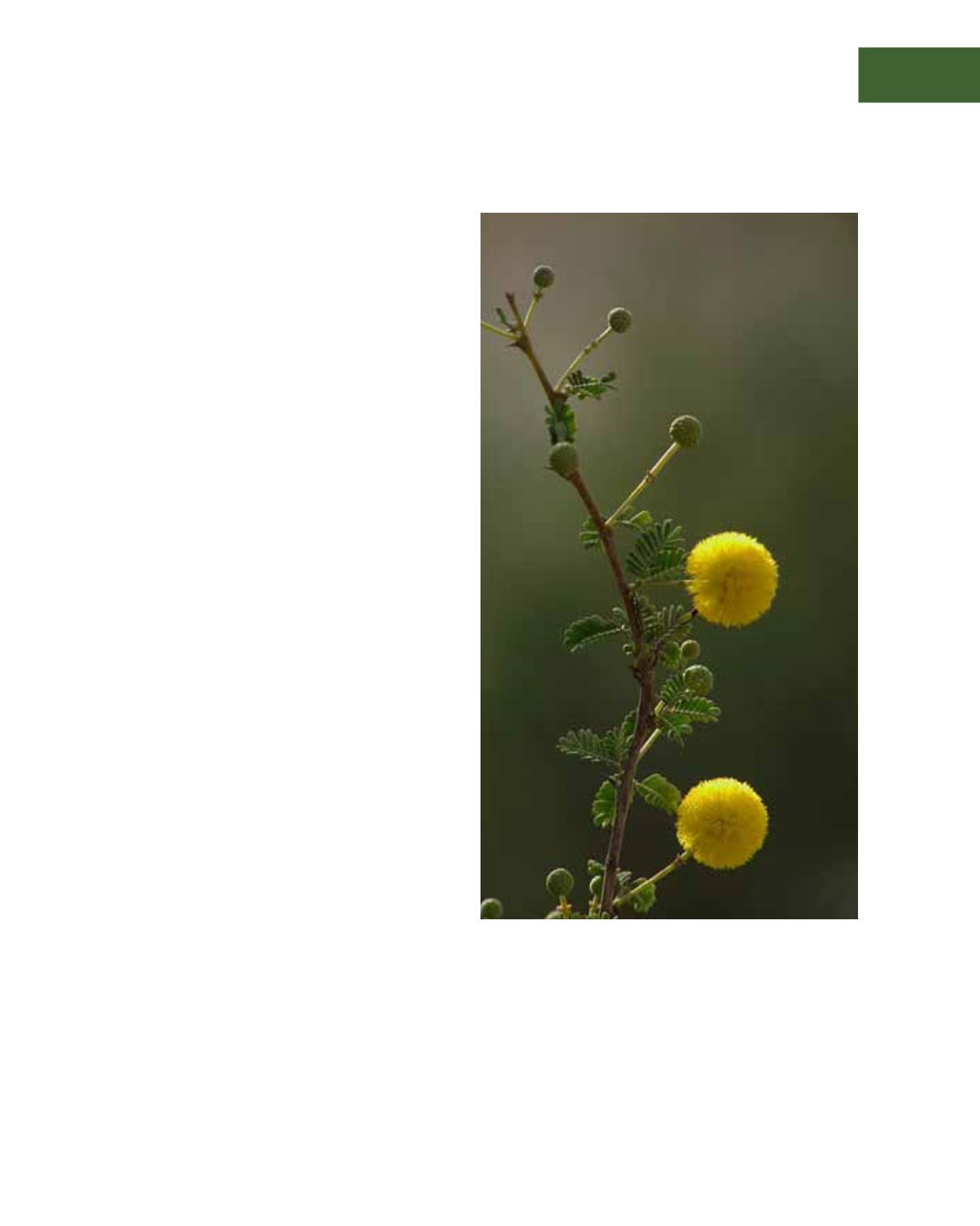

Part 1: Introduction
15
Native/indigenous species not only adapt to the climate,
but they are also resistant to diseases and pests and easier to
maintain. They are considered a mirror of nature and increase
the biodiversity of the Arriyadh region
In the region native seasonal plants appear after rainfall. This
typically occurs in valleys or low-lying areas (Rawdha), where
there are relatively good soil conditions and groundwater.
For the above reasons expanding the use of local species in
gardening and landscaping in both the short and long terms
has many advantages and is hence preferred
Planting native Species:
The natural beauty of the desert plants inspire the creation of
quality gardens and landscapes using plants most suited to
their local environment. This serves several important purposes
including:
• Creating visually attractive landscapes.
• Reducing heat and glare and improving the micro climate
• Ease of maintenance and minimise the water consumption
Landscaping using native desert plants is a preferred process
because the plants are best suited to the local soil conditions
and availability of water. When planting native plants a natural
layout and pattern is preferred. Intensive landscaping projects
using exotic plants that require an abundance of irrigation and
fertilisation should be avoided.
Native species look their best when planted with gravel mulch
beneath them and with random rock placement. This should
be carried out so the arrangement appears to be as natural as
possible. Unusual shapes and colours should be avoided and
the size of rocks should vary according to what occurs naturally
in the local environment. Rows or distinctive patterns of rocks
rarely look good, especially those placed in circles around tree
trunks or distributed haphazardly.
Irrigation Efficiency:
Landscaping works in urban locations require considerable
efforts in terms of the costs of water and maintenance.
Landscaping works should be sustainable and efficient, while
water minimisation should be basic principle of design. The
use of native plants in landscaping in the short and long term
is essential, taking into account the diversity of the plants in
the city and introducing plants with tolerance to the local
environment. Use of exotic plants from other areas should only
be considered for specific limited purposes.
















